Wouldn’t it be great to wake up and find yourself somewhere else? To discover that the cares of the past have all dissolved into a glorious new future where, if you don’t feel at home, you can at least know that all you were fighting for back in your day finally came to pass? That’s what happened to a certain Mr Guest back in 1890 … and at the moment I can’t help wishing it would happen to me.
Yes, it’s a utopian idea. Utopia – good place? Or no place? Certainly no place like home at the moment. My jaw dropped when I saw Teresa May’s comments about those claiming to be a citizen the world – indeed, the whole Tory Party Conference has seen my jaw on the floor. But it’s that comment “if you believe you are a citizen of the world, you are a citizen of nowhere” that really got me. What would William Morris say? I think he’d be laughing. Nowhere? Has she never read anything? Doesn’t she know what Nowhere is? Nowhere? Yep, I’ll take that – I’ve read about Nowhere and it sounds like a great place to be.

Nowhere is a place of poetry, of song, of storytelling and of friends gathering together to share laughter and talk over good food and drink in beautiful places. Well, so far so good – I’m very lucky, I live in Nowhere if that’s the case, for my life is filled with creativity and creative friends. Lucky me – others here in today’s Non-Nowhereland don’t have that. In Nowhere, everyone has that chance to express themselves and be supported in their creative self-expression.
Nowhere is a place where everyone has a job, a place in the world. But it’s not a Non-Nowhereland day job, wage-slavey, tied to the mortgage, to the rent, to your parents’ house, to poverty kind of job. And it’s not a big business, doing deals to add to your 3 million a year kind of job either. Its community working together, slotting people into the right jobs at the right time. Everybody who can helps in the harvest, and people take themselves off onto working parties to work on the land, to mend roads, to maintain Nowhere and its workings. Because they want to. Because they are fit and healthy and want the exertion of physical work. Because they feel in their hearts that this is useful work that needs doing. There’s plenty of time to create craft and art – and, why not, the scientific discoveries that were rather off Morris’s radar.
In Nowhere there’d be no fracking. No way. The people of Nowhere would stare at you with jaws dropped as low as mine has been all the time, it seems, since the 23 June. There’d be no extensive logging. No waste in the sea. No open caste mining. (Although in Nowhere, I fear, they’ll still be clearing up what Non-Nowhereland did.) So how do they power Nowhere? Well, there’s plenty of dung in the Houses of Parliament, they can use that, perhaps? But in Nowhere they’ve sloughed off our Non-Nowhereland need for excessive consumption and they need less energy than we believe we do. In Nowhere they care for the land, and they care for the buildings in it. Morris spent some considerable time trying to preserve some trees near his home on the river in Hammersmith … in Nowhere that care encompasses everywhere.
Yes, I know – it’s a utopia. It won’t happen. Not like this. Nowhere wouldn’t be ideal for me, I know. But it would find a place for me, it wouldn’t turn me away. In Nowhere there is tolerance. Criminals are cared for – in the end the punishment they get is that that they inflict on themselves. But crimes are rare, because the community supports people, and because, perhaps, people have freedom. They don’t feel trapped in relationships, in jobs, in places – in lives that they can’t bear. And there is little private property (Nowhere is a Socialist dream, of course – albeit one tending towards anarchy). The historian Guest spends (a lot of) time talking to says this on Guest’s question about punishment:
“There, neighbour!” said the old man, with some exultation. “You have hit the mark. That punishment of which men used to talk so wisely and act so foolishly, what was it but the expression of their fear? And they had no need to fear, since they – i.e., the rulers of society – were dwelling like an armed band in a hostile country. But we who live amongst our friends need neither fear nor punish. Surely if we, in dread of an occasional rare homicide, an occasional rough blow, were solemnly and legally to commit homicide and violence, we could only be a society of ferocious cowards. Don’t you think so neighbour?”
We did think so, didn’t we? But now I see a culture that is becoming more cowardly again. In Non-Nowhereland we don’t love ourselves or take responsibility for ourselves and we don’t love our neighbours. We are now being encouraged to hate them. How long before we go back to 1890 and start ‘solemnly and legally’ committing crimes against humanity? I am afraid. As Morris was afraid. And Morris didn’t see what the people of Non-Nowhereland in the 20th and 21st centuries have done to each other in fear.
Nowhere isn’t perfect. Parents today would boggle at Morris’s Lord of Flies type children bringing up the children in the summer ideas. I suspect he was writing with hindsight of having brought up two boisterous young girls who had the good fortune to escape the ‘hideous town’ and play in the gardens and around the Old House on the Thames that Morris rented alongside his friend/romantic rival Dante Gabriel Rossetti. But in Samoa (I think!) it was the older children who brought up the younger because the women had better things to do with their time – making craft, as it happens. For me, Nowhere is a bit anti-intellectual, but Morris hints that those who want to spend their time investigating the past can – it’s up to them, even if it’s a bit odd. Then there is the woman thing. Morris actually changed his text in the wake of cross comments from his feminist friends and readers and included more active female characters when the serial was published as a book – although he still believed women were more likely to want to do domestic stuff. Well, as a man of his time he still had a ways to go in imagining what women could do and be – but he saw further than most and he allows choice. And then there’s his almost-silence on the rest of the world – it is a very English utopia, after all. As I say, not perfect.
Morris’s Nowhere doesn’t need to be ours. Morris’s Nowhere was written in part as a response to another Nowhere, Edward Bellamy’s Looking Backward – a machine-led society imagined in 1887. More than 100 years on we need new Nowheres. Each age produces its own: from Plato’s Republic through to Utopia (Thomas More, riffing on the delights of the Greek language in which the ‘u’ or ‘eu’, which sound the same in English, could mean something negative – that ‘Noplace’ – or something positive, that ‘Goodplace’ – or both at the same time…) and to the Erewhons and Nowheres of the 19th century. We need Nowhere. If you are a citizen of Nowhere, you might have your head in the clouds, but your feet are on the ground. You are dreaming a better world, but perhaps, like Morris, you are also prepared to go out there and help make it.
I’m proud to be a citizen of Nowhere. And somewhere, Morris is still laughing. It’s the only way to stop himself crying about how we never, ever seem to learn from the mistakes of the past.

 William Morris died #OTD exactly 120 years ago. The 3 October 1896 was a bleak day for his friends and family. The Great Man was only 62, but had been failing for some time before. Nonetheless, that July Morris had travelled to Norway with a friend – his doctor knowing that this would be his last voyage. Apparently on the boat Morris asked to seated so his could see ‘the younger and prettier women…’ but the trip didn’t raise his usual enthusiasms for the wild landscapes of the north. His dear friends Sydney Cockerell and Emery Walker met him from the boat, and were informed that congestion of the lungs had now set in. He was still working – his last novel, The Sundering Flood, was finished through dictation to Cockerell that August, but things were ending. Walker and Cockerell knew they couldn’t fill Morris’s shoes and decided not to continue Morris’s Kelmscott Press after he was gone – though both continued to advance and enhance the world of both private and commercial printing throughout their lives. His friends visited – Georgie and Edward Burne Jones, Philip Webb, F S Ellis – old friends. His wife, daughter May (his elder daughter, Jenny, was sick herself, and couldn’t come), Georgie and a couple of other friends were with him at the end, with Walker, Cockerell, Webb and Edward Burne Jones all there the day before, and immediately after. Georgie said he died ‘as gently, as quietly as a babe who is satisfied drops from its mother’s breast.’
William Morris died #OTD exactly 120 years ago. The 3 October 1896 was a bleak day for his friends and family. The Great Man was only 62, but had been failing for some time before. Nonetheless, that July Morris had travelled to Norway with a friend – his doctor knowing that this would be his last voyage. Apparently on the boat Morris asked to seated so his could see ‘the younger and prettier women…’ but the trip didn’t raise his usual enthusiasms for the wild landscapes of the north. His dear friends Sydney Cockerell and Emery Walker met him from the boat, and were informed that congestion of the lungs had now set in. He was still working – his last novel, The Sundering Flood, was finished through dictation to Cockerell that August, but things were ending. Walker and Cockerell knew they couldn’t fill Morris’s shoes and decided not to continue Morris’s Kelmscott Press after he was gone – though both continued to advance and enhance the world of both private and commercial printing throughout their lives. His friends visited – Georgie and Edward Burne Jones, Philip Webb, F S Ellis – old friends. His wife, daughter May (his elder daughter, Jenny, was sick herself, and couldn’t come), Georgie and a couple of other friends were with him at the end, with Walker, Cockerell, Webb and Edward Burne Jones all there the day before, and immediately after. Georgie said he died ‘as gently, as quietly as a babe who is satisfied drops from its mother’s breast.’ He is buried in a quiet corner of Kelmscott churchyard, where Janey, Jenny and May later joined him. It is an unassuming gravestone by an unassuming church. Morris loved Kelmscott church, a quiet 12th century building with little spectacle. Webb designed the gravestone, based on a piece of stonework that Webb found in the churchyard, making Morris’s tomb utterly of the place. Webb understood his old friend very well – their enthusiasms matching each others in art, architecture and socialism along the way – and I think Morris would have been pleased with the simplicity of it.
He is buried in a quiet corner of Kelmscott churchyard, where Janey, Jenny and May later joined him. It is an unassuming gravestone by an unassuming church. Morris loved Kelmscott church, a quiet 12th century building with little spectacle. Webb designed the gravestone, based on a piece of stonework that Webb found in the churchyard, making Morris’s tomb utterly of the place. Webb understood his old friend very well – their enthusiasms matching each others in art, architecture and socialism along the way – and I think Morris would have been pleased with the simplicity of it.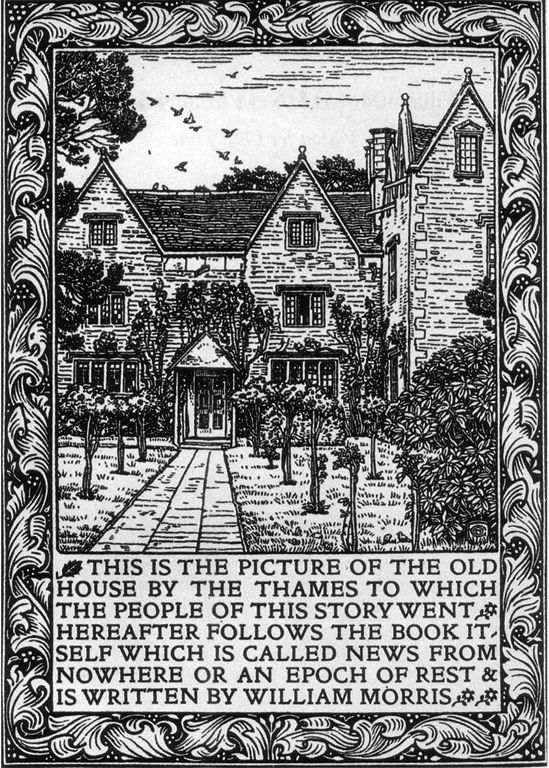 What would William Morris say to his legacy? The obituaries of the day heralded him as a poet. Today his verse is little read. We know him as a designer, mostly, someone who created nice wallpapers and fabrics – and maybe we know he was the father of the Arts and Crafts Movement. We know him, perhaps, as someone who’s love life was tangled. We might know the ‘useful and beautiful’ quote – but maybe not what prompted him to need to write that and all the other essays on living through and in art. We may know that he was a socialist and a ‘dreamer of dreams’. We know his prose better than his poetry, and maybe we might have read News from Nowhere. We know, some of us, the Icelandic sagas he helped bring to the British public. We’ve been in, perhaps, some of the buildings the organisation he founded, the Society for the Protection of Ancient Buildings, saved in their original state for the nation. We may also have seen the stained glass his firm placed in many ancient – and new – buildings. We might not know all of him, but we do know him.
What would William Morris say to his legacy? The obituaries of the day heralded him as a poet. Today his verse is little read. We know him as a designer, mostly, someone who created nice wallpapers and fabrics – and maybe we know he was the father of the Arts and Crafts Movement. We know him, perhaps, as someone who’s love life was tangled. We might know the ‘useful and beautiful’ quote – but maybe not what prompted him to need to write that and all the other essays on living through and in art. We may know that he was a socialist and a ‘dreamer of dreams’. We know his prose better than his poetry, and maybe we might have read News from Nowhere. We know, some of us, the Icelandic sagas he helped bring to the British public. We’ve been in, perhaps, some of the buildings the organisation he founded, the Society for the Protection of Ancient Buildings, saved in their original state for the nation. We may also have seen the stained glass his firm placed in many ancient – and new – buildings. We might not know all of him, but we do know him.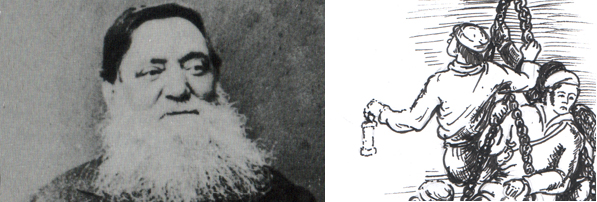


 That 160 years brought two wars to European soil. Abbeville is on the River Somme… The town was hit twice, both in the First and Second World Wars. Poor St Wulfran’s suffered a hit in the Second World War. Accordingly to my ancient French Rough Guide (1997! So long ago!) it was then ‘under scaffolding since the war’ and ‘still closed to the public’
That 160 years brought two wars to European soil. Abbeville is on the River Somme… The town was hit twice, both in the First and Second World Wars. Poor St Wulfran’s suffered a hit in the Second World War. Accordingly to my ancient French Rough Guide (1997! So long ago!) it was then ‘under scaffolding since the war’ and ‘still closed to the public’ St Wulfran’s as we see it now dates from a building campaign that began in 1488 and ended in 1539. The building dragged on past the end of the Gothic, and there was a hiatus, with the chancel being an unassuming 17th century take on Gothic, quiet and low compared to the soaring flamboyance of the architecture of the rest. Outside, the difference between the two parts is striking (though not as striking as Beauvais!) – this photograph taken from the chancel looking up at would I assume would have formed the crossing.
St Wulfran’s as we see it now dates from a building campaign that began in 1488 and ended in 1539. The building dragged on past the end of the Gothic, and there was a hiatus, with the chancel being an unassuming 17th century take on Gothic, quiet and low compared to the soaring flamboyance of the architecture of the rest. Outside, the difference between the two parts is striking (though not as striking as Beauvais!) – this photograph taken from the chancel looking up at would I assume would have formed the crossing.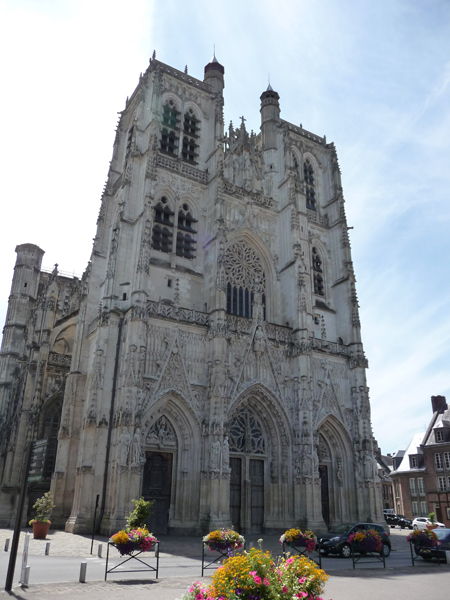 Its glory is the west front, of course. Compared to some we would see, it is restrained, but has an elegance, a simplicity in the way the plain spaces intermix with the coiling whirls of the rose window and the sculpture.
Its glory is the west front, of course. Compared to some we would see, it is restrained, but has an elegance, a simplicity in the way the plain spaces intermix with the coiling whirls of the rose window and the sculpture. I love this sculpture of St Eustace crossing the river in the tympanum over this door on the north side.
I love this sculpture of St Eustace crossing the river in the tympanum over this door on the north side.
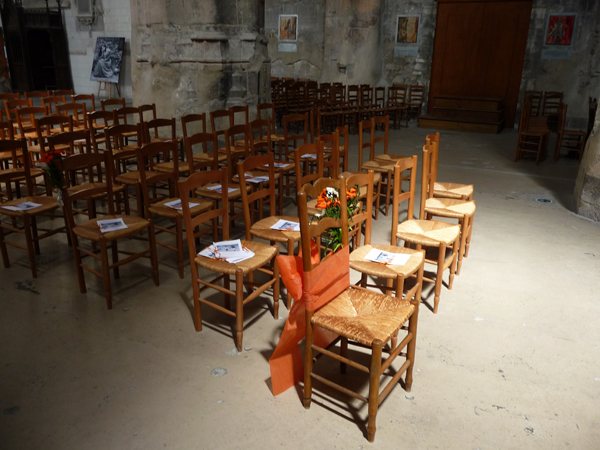

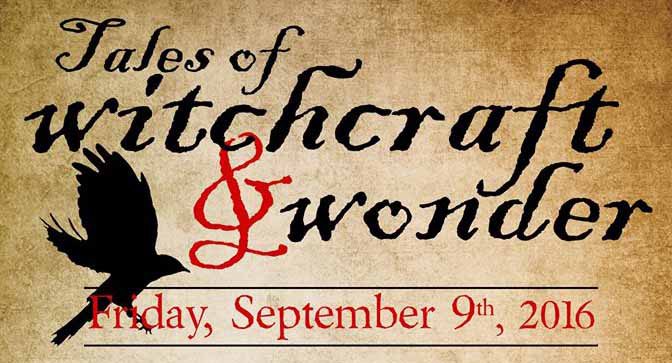
 On Friday night I had an absolute blast! I had the privilege to take part in an amazing show,
On Friday night I had an absolute blast! I had the privilege to take part in an amazing show, 
 And all of this in the most amazing venue, Gloucester Blackfriars. Hard to believe the difference in the site from when I worked in Gloucester 10 or so years ago. I worked in the Docks, a bare hop (not even a skip and a jump) away, and although I knew it was there, of course I never went in. Now it’s a fantastic venue, perfect for storytelling and music. So atmospheric … the courtyard magical with little lights and the sound of the superb Gwilym Davies on pipe and tabor ushering in the guests with music, and the thrill of being in the building with all its layers – the great fireplace hanging above us as we performed, that strange combination of church and home. A friend and I were wondering what ghosts marched above our heads, pacing out an afterlife on lost floors… The Inkies had made it beautiful, too, and I particularly loved the film of the Forest with fairies playing above me – what could have been more fitting for the Fairy Horn?
And all of this in the most amazing venue, Gloucester Blackfriars. Hard to believe the difference in the site from when I worked in Gloucester 10 or so years ago. I worked in the Docks, a bare hop (not even a skip and a jump) away, and although I knew it was there, of course I never went in. Now it’s a fantastic venue, perfect for storytelling and music. So atmospheric … the courtyard magical with little lights and the sound of the superb Gwilym Davies on pipe and tabor ushering in the guests with music, and the thrill of being in the building with all its layers – the great fireplace hanging above us as we performed, that strange combination of church and home. A friend and I were wondering what ghosts marched above our heads, pacing out an afterlife on lost floors… The Inkies had made it beautiful, too, and I particularly loved the film of the Forest with fairies playing above me – what could have been more fitting for the Fairy Horn?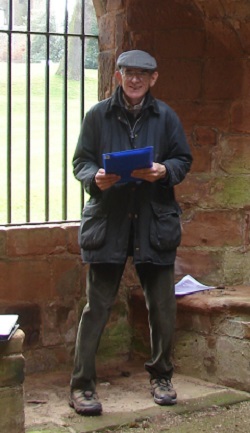 The wonderful and inspirational Dr Richard Morris, who ran the Monastery and Cathedral course I took in my second year at Warwick University, sadly died last year. I didn’t know until writing the Nature of Gothic blog. In fact I was just telling my favourite anecdote about him last night! He was only 71. By far my favourite lecturer at Warwick (although they were all outstanding!) he inspired in me this love of medieval architecture, the Romanesque, the Herefordshire School of sculpture and – most importantly – inculcated a fascination in early medieval British and Irish sculpture and architecture. He manfully tutored me outside his comfort zone when I did my dissertation on Irish High Crosses – but it’s this course, and the third year ‘Perp’ course (sorry, I actually can’t remember what the course was called – but we were studying the Perpendicular period in the late 14
The wonderful and inspirational Dr Richard Morris, who ran the Monastery and Cathedral course I took in my second year at Warwick University, sadly died last year. I didn’t know until writing the Nature of Gothic blog. In fact I was just telling my favourite anecdote about him last night! He was only 71. By far my favourite lecturer at Warwick (although they were all outstanding!) he inspired in me this love of medieval architecture, the Romanesque, the Herefordshire School of sculpture and – most importantly – inculcated a fascination in early medieval British and Irish sculpture and architecture. He manfully tutored me outside his comfort zone when I did my dissertation on Irish High Crosses – but it’s this course, and the third year ‘Perp’ course (sorry, I actually can’t remember what the course was called – but we were studying the Perpendicular period in the late 14 Last year my husband, Anthony, and I went on holiday to France. Our aim – or at least mine – was to follow in the footsteps of William Morris and his friends Edward Burne Jones (EBJ) and William Fulford and their dash around the great gothic churches of Northern France in 1855. They were there for three weeks, we for two. They saw more than 14 churches from Abbeville to Avranches, and we saw 8 of their 14+ from Abbeville to Louviers, falling down before Rouen and scuttling to the coast for beachside R&R on our last few days. Over that time I took notes in each church, and Anthony wrote poems. Woven in among the blogs on this site will be a series that chart that journey and Morris’s parallel one 160 years before.
Last year my husband, Anthony, and I went on holiday to France. Our aim – or at least mine – was to follow in the footsteps of William Morris and his friends Edward Burne Jones (EBJ) and William Fulford and their dash around the great gothic churches of Northern France in 1855. They were there for three weeks, we for two. They saw more than 14 churches from Abbeville to Avranches, and we saw 8 of their 14+ from Abbeville to Louviers, falling down before Rouen and scuttling to the coast for beachside R&R on our last few days. Over that time I took notes in each church, and Anthony wrote poems. Woven in among the blogs on this site will be a series that chart that journey and Morris’s parallel one 160 years before. ‘Forsooth, brothers, fellowship is heaven, and lack of fellowship is hell: fellowship is life, and lack of fellowship is death …
‘Forsooth, brothers, fellowship is heaven, and lack of fellowship is hell: fellowship is life, and lack of fellowship is death …